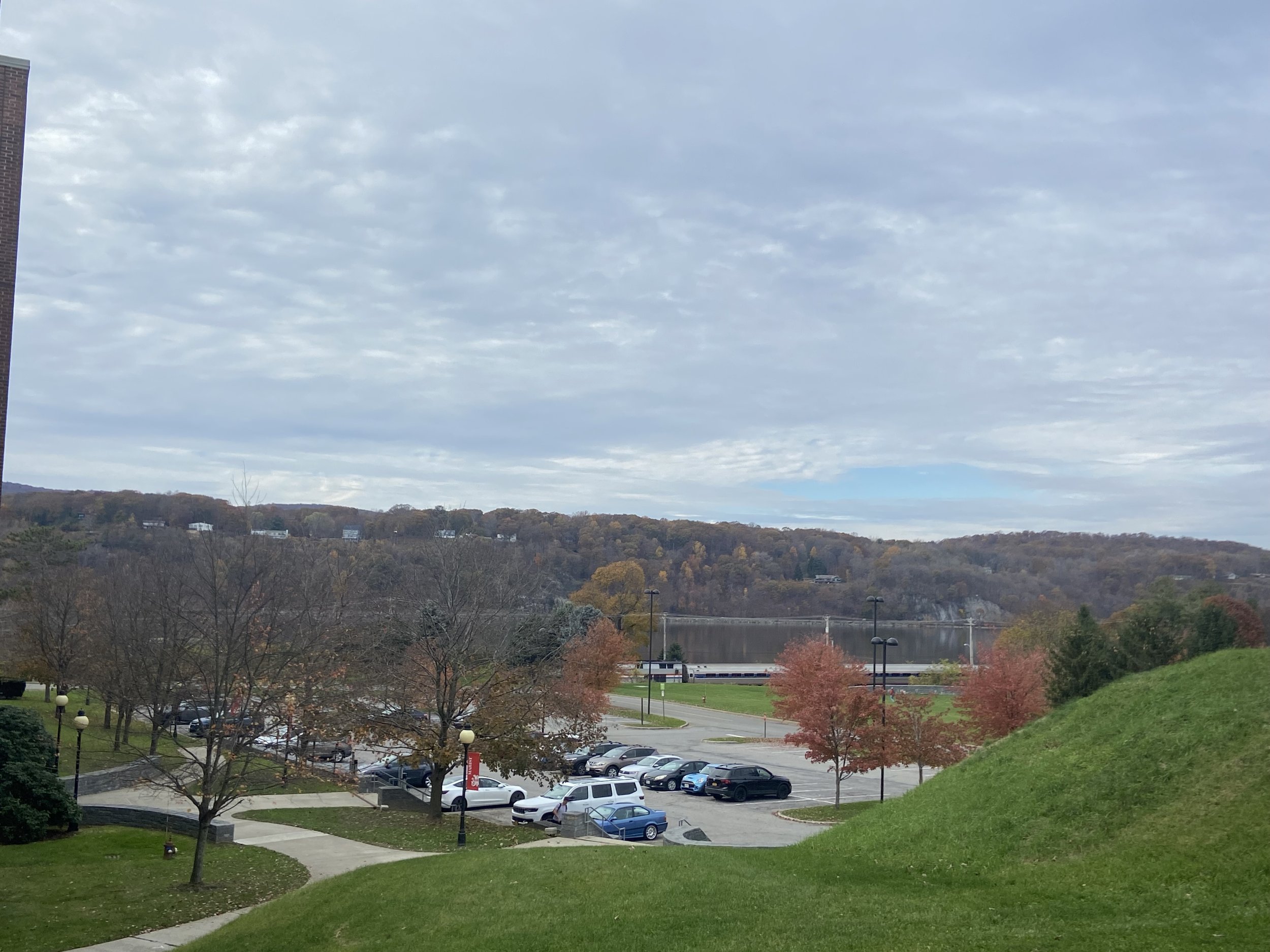Fall Foliage Suffers Under Climate Change Impacts
This year's fall foliage was less vibrant than it was before, and climate change is once again the likely culprit in this latest of environmental imbalances. Credit: Jacquelyn Drain '27
Marist College is well-known for its picturesque views of the Hudson River Valley, which becomes even more beautiful during autumn. But those same leaves were less vibrant than they were before.
This year, fall seemed to go by quicker than in previous times, with the leaves past peak color by November. According to Marist professor of plant biology Jennifer Han, the temperature was not on our side this time, as the Northeast area experienced a wet summer with high humidity levels — the opposite of what is needed for the most colorful trees.
“The best fall color is produced when we have several warm, sunny days and cool, but not freezing, nights in the fall,” said Han.
After the warmest August ever recorded, along with record-breaking days of extreme heat for cities across the country, trees have endured additional stress, and some have essentially gone dormant. Indeed, the leaves might even skip the fall season altogether after the intense summer of 2023.
“Without cool nights, you will not get as intense colors in the red range,” said Han.
In addition, trees in the region could not store enough energy through photosynthesis for the winter season due to the drought conditions from last year. According to The Washington Post, the spring and summer months significantly impact the outcome of the foliage and survival of the trees during the wintertime.
Still, with all this data available, there is limited research into the exact timing of fall leaf changes. According to Ian McGregor, a forest ecologist and remote sensing scientist with the Cary Institute, a lack of interest may be to blame, along with minimal funding and the lack of a common standard for leaf color and its intensity.
“People don't see it as worthwhile pursuing… it gets difficult to quantify ‘what is peak,’” said McGregor.
However, the connection between fall foliage and climate change is still apparent, even while scientists continue to work through attribution science to link the two. “There are several factors at work here,” said Han. “But with increasing temperatures in general, warmer days and nights, you can expect to see less intense fall colors.”
